Table of contents
Yeast flakes are also called yeast powder , fine yeast , fine yeast flakes , nutritional yeast , nutritional yeast flakes or seasoning yeast flakes . They consist of inactivated yeasts ( single-celled lower fungi, Saccharomyces cerevisiae ) which are dried and processed into flakes or powder.
Use in the kitchen:
What do you need yeast flakes for? Yeast is used in the kitchen for low-sodium (low-salt) seasoning and flavoring. It gives dishes a spicy, harmonious note (in the direction of umami). Yeast flakes are a basic ingredient in many vegan spreads. Yeast flakes can also be used to thicken soups and sauces. To do this, stir 2 tablespoons of yeast flakes into 500 ml of liquid after cooking.
Nutritional yeast flakes can be used to make breadcrumbs and vegan omelettes or to refine salads. Yeast powder is also suitable for sprinkling on rice or pasta dishes, as a kind of substitute for parmesan. Since the B vitamins contained in them are very heat-sensitive, it is important not to heat the yeast flakes if possible, so it is better to add them after cooking.
Yeast flakes have a mild nutty to cheesy taste and have a flavor-enhancing side effect.
Yeast flakes are not raw , only fermentation yeast or fresh baker's yeast / brewer's yeast in block form is raw. For more information about the different types of yeast, see the ingredient Fresh Baker's Yeast .
Recipe for vegan parmesan with nutritional yeast:
Ingredients: 25 g sunflower seeds ( almonds or sesame seeds are also suitable), 10 g yeast flakes, sea salt andpepper .
Preparation: Chop the ingredients in a food processor or grind them finely and store in the fridge until ready to eat. This vegan parmesan made from yeast flakes refines pasta, rice dishes or salads.
Recipe for vegan yeast spread (cheese substitute):
Ingredients: 150 ml water , 4 tbsp yeast flakes, 2 tbsp vegetable margarine , 1-2 tbsp wheat flour , 1 tsp salt , 1 tsp mustard .
Preparation: Melt the margarine in a small saucepan and stir in the flour with a whisk. Add water, yeast flakes, salt and mustard and bring to the boil while stirring. Yeast melt is a vegan cheese alternative that can be used to top pizza, lasagne, gratins or casseroles.
Vegan recipes with nutritional yeast (yeast powder) can be found under the note: " Recipes that have the most of this ingredient ".
| Not only vegans or vegetarians should read this: Vegans often eat unhealthily. Avoidable nutritional mistakes . |
Shopping - where to buy?
You can occasionally find yeast flakes in larger supermarket chains such as Coop , Migros , Spar , Rewe or Edeka . Supermarkets such as Denner , Volg , Aldi , Lidl or Hofer rarely stock yeast flakes. In selected drugstores, health food stores, organic shops, organic supermarkets ( Alnatura , Denns etc.) and on the Internet, yeast flakes are almost always available as a food supplement and as a seasoning. Dry yeast products such as yeast flakes are often available, but also liquid yeast products, seasonings and yeast-based spreads. There are also sweet yeast flakes, which contain whey powder, honey or flower pollen.
When shopping, look for products without artificial additives and give preference to organically produced yeast powder or yeast flakes. The package size is usually 150 to 200 g.
Yeast flakes should not be confused with yeast extract . Yeast extract is a paste-like protein concentrate that is obtained from the soluble components of fermented yeast via autolysis (with the help of enzymes). It is often included in bouillons and seasonings as a flavoring component. Well-known yeast-based spice pastes in their pure form include Marmite Yeast Extract (UK), Vitam-R (D), Vegemite (AUS), Vegex (USA) and Cenovis (CH).
The well-known dry yeast or fresh yeast is used as a leavening agent for bread, rolls or cake dough. Beer yeast or brewer's yeast is also pure yeast that is used specifically for fermenting beer. It still consists of active yeast fungi.
Storage:
After opening the package, yeast flakes should be stored in a dry, dark and cool place. A sealable storage container made of glass or plastic is best. If no pests or moisture come into contact with them, yeast flakes will last for 1-2 years.
Production:
The production of organic yeast has been possible since 2009, as it has since been subject to the EC organic regulation. Depending on the desired result, strains of different pure yeasts are used. Natural yeasts usually consist of a mixture of different yeast strains. 1
Organic yeast flakes are made by cultivating yeast ( Saccharomyces cerevisiae ) on grain or molasses. The latter is more common in conventional yeast cultivation, as there is also a shortage of organic sugar beet available. 2 The multiplying yeast strains produce a liquid yeast known as yeast milk, yeast cream or yeast cream. This mass is sprayed onto rollers and dried (roller drying). The yeast dried for yeast flakes is inactivated by the short-term high temperatures (up to 100 °C), so it does not contain any living fungal cells. Finally, the dry yeast is ground into coarse flakes. 3
When making a yeast extract, water and heat activate the yeast's own enzymes. The fermentation process causes the cell walls to break down and the nutrients either escape from the cell or remain inside the cell and can be used because the cell wall is destroyed. What remains are smaller protein compounds, B vitamins and free amino acids (glutamic acid). Only autolysis is permitted for organically produced yeast extracts, so only the yeast's own enzymes can be used and no other additives can be included. Hydrolysis is common in the conventional food industry, where foreign enzymes and acids are used to achieve a much higher concentration of glutamic acid. 3
Depending on the strain, but even more so on the composition of the nutrient solution on which the yeast is grown, they differ in their properties and nutritional values. Baker's yeast consumes oxygen and "breathes out" carbon dioxide, which helps loosen the dough. Beer and wine yeasts produce alcohol (ethanol) in the absence of oxygen by fermenting malt or fruit sugar. 2
Ingredients - nutritional value - calories:
Fine yeast has a calorie content of 336 kcal/100g. The protein content is very high at 49.3 g, carbohydrates are 13% and fat makes up about 4%. However, you consume much less than 100 g per meal, namely about 1 tablespoon, which has an energy value of about 9.5 kcal. 4
Yeast flakes have many valuable ingredients. The daily requirement of vitamin B 1 (1.2 mg) is covered by more than 100% with 1 tablespoon. 100 g of nutritional yeast contains around 41 mg of thiamine. In comparison: brewer's yeast contains 12 mg/100g and wheat germ contains 1.8 mg/100g. This water-soluble vitamin is important for energy metabolism and the nervous system. 4
Although much less, yeast flakes or yeast powder also contain some vitamin B 2 : 4 mg/100g. One tablespoon of this covers about 8% of the daily requirement of riboflavin.Dry yeast has the same amount of this water-soluble vitamin, while yeast-based spice paste has significantly more at 17.5 mg/100g. The heat-resistant but light-sensitive vitamin is necessary for the function of many enzymes and is involved in various metabolic processes. 4
Folate is one of the B vitamins and is a folic acid-active substance . This water-soluble vitamin is well represented in 100 g of yeast flakes, with 300 µg covering an adult's daily requirement. However, nobody eats that much of it. 1 tablespoon therefore only provides around 8.5 µg. Pulses make a significant contribution to covering the daily folic acid requirement: lentils (cooked 180 µg/100g), mung beans (cooked 159 µg/100g), chickpeas (cooked 63 µg/100g). 4 As the vitamin is very sensitive to heat, the content is significantly reduced when cooked. Naturally occurring folic acid only occurs as a precursor (folate). It is particularly important for cell renewal, which is why pregnant women or those trying to become pregnant are particularly advised to increase their daily folic acid intake to around 550 µg. 5 Read more about it here .
Yeast flakes contain around 2 µg of vitamin B 12 per 100 g, and 1 tablespoon contains around 0.06 µg 4 - so yeast contains almost no vitamin B 12. The daily requirement of this water-soluble vitamin is around 4 µg. 5 Cobalamin is produced exclusively by microorganisms and is almost non-existent in plant-based foods. For vegans, a dietary supplement is therefore unavoidable. 6
If yeast flakes contain a sufficient amount of vitamin B 12 , they are enriched with vitamin B 12. This must be declared accordingly.
Noble yeast also contains vitamin B 6 (pyridoxine) , vitamin B 3 (niacin) , vitamin B 5 (pantothenic acid) and magnesium .
The type and quantity of yeast ingredients depend on the yeast strain, the culture medium and the processing. The ingredients can vary considerably even between yeast products of the same type. We show the average values because there are too many false promises from suppliers and retailers.
You can find all the ingredients, the coverage of the daily requirement and comparison values with other ingredients in our nutrient tables. In the article Nutrients explained you will get a detailed insight into the topic.
Health aspects - effects:
How healthy are yeast flakes? Yeast flakes are suitable as a general nutritional supplement. They are also said to have a positive effect on diabetes, liver diseases and skin diseases (by activating the metabolism). Thanks to the high content of B vitamins, they can be useful for tiredness and fatigue.
The glutamic acid contained in the yeast flakes is a naturally occurring amino acid and should not be confused with the glutamates used in industry (E 620 - E 625). Glutamic acid is a building block for proteins and plays an important role in cell metabolism. Glutamate (the ionized form) is produced in the citric acid cycle and acts as a neurotransmitter in the brain. The amino acid glutamine is produced from L-glutamic acid when it binds to the cell poison ammonia released during protein and amino acid degradation. Foods such as tomatoes , soybeans or fish naturally contain more free glutamic acid. In concentrated form, as tomato paste, fish or soy sauce, it is therefore often used for seasoning. 7
Glutamates are the esters and salts of L-glutamic acid. These salts are mainly known as additives (flavor enhancers) in foods. The simple sodium salt, monosodium glutamate (E 621), is the most commonly used. It is produced using a biotechnological process.
Dangers - Intolerances - Side effects:
Yeast flakes whose yeast is grown on a grain basis can contain gluten and are therefore not recommended for people with gluten intolerance or celiac disease. Always read the ingredients and look for the "gluten-free" symbol, which usually appears as a crossed-out ear of corn and sometimes includes the addition "gluten-free" or "gluten free". 8 There are also gluten-free yeast flakes that are cultivated on rice, for example.
Yeast products are only partially suitable or not suitable for people with high uric acid levels and gout, as they are high in purines. They are also unsuitable for people with mold or yeast allergies.
People with histamine intolerance should not consume yeast extracts. This fermented product is very high in histamine. However, some people with histamine intolerance tolerate yeast flakes or yeast powder. This is very individual and everyone should try it out for themselves.
Glutamic acid can trigger an intolerance reaction in some people. This is why yeast flakes or yeast extracts in healthy diets are often criticized negatively. The question arises as to whether yeast products with their natural glutamic acid can also trigger the so-called "Chinese restaurant syndrome" (Chinese restaurant syndrome, glutamate intolerance). In addition, the naturalness of such products must be questioned, as they are subject to very intensive processing. Until the end of 2013, even conventional raw materials were permitted for the production of organic yeast products. Since 2014, 95% must come from organic farming. 9
Danger of confusion:
Yeast flakes are not oat flakes, even if they look similar. Oat flakes are rolled grains, fine or coarse depending on the type. Yeast flakes are yeast fungi grown on grain or molasses and then inactivated. There is no danger of confusing these two flakes. Yeast flakes can also be added to muesli. The amount should be adjusted to suit your taste.
General information:
Wild yeasts are small organisms that are invisible to the human eye. They are among the lower, single-celled fungi.
When people in the food industry talk about yeast, they mostly mean Saccharomyces cerevisiae , i.e. baker's or brewer's yeast. According to Wikipedia , it is also used to produce technical enzymes or in medicine (for hepatitis B vaccines and the pancreatic hormone that is relevant to diabetes). Yeast banks store, multiply and sell commercially usable yeast. 10
Alternative names:
Yeast flakes are called nutritional yeast in English. In German they are also known as nutritional yeast, nutritional yeast flakes, yeast powder or seasoning yeast flakes.
Literature - Sources:

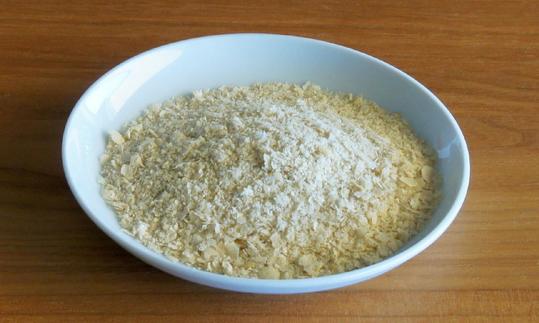

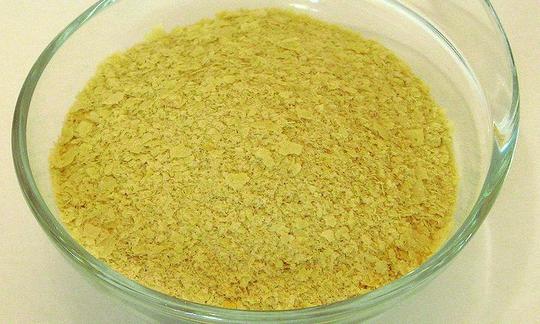

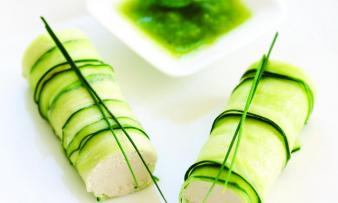
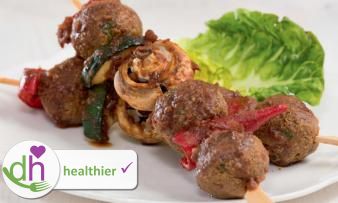
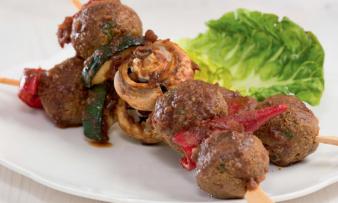
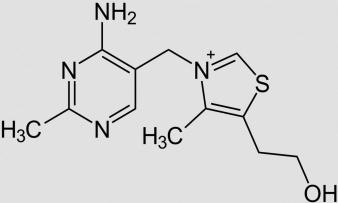
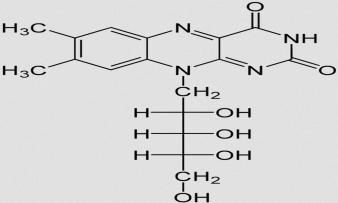



Comments